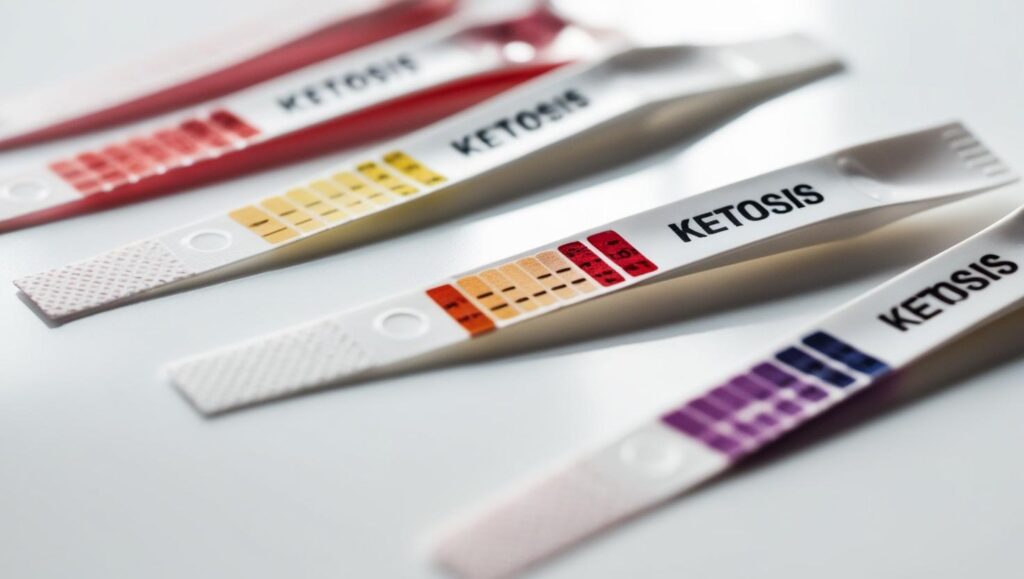What is the Keto Diet and How Does It Work?
The ketogenic diet plan, commonly known as the keto diet, has surged in popularity in recent years for its potential benefits in weight loss, metabolic health, and even certain medical conditions. But what exactly is the keto diet, and how does it work? This comprehensive guide will break down the science, the method, and the facts of the keto lifestyle.
Understanding the Keto Diet
The keto diet is a high-fat, moderate-protein, and low-carbohydrate diet. Its primary goal is to shift the body’s metabolism away from carbohydrates and towards fat as the main energy source. Traditionally, our bodies use glucose (derived from carbohydrates) for energy. By drastically reducing carb intake (typically to less than 50 grams per day), the body is forced to find an alternative fuel source.
How the Keto Diet Works: The Science of Ketosis
When we transform to a low-carb diet, the body’s stored glucose depletes. In response, the liver begins to break down fats into molecules called ketones, which can be used as an alternative energy source, especially for the brain and muscles. This metabolic state is known as ketosis. You may want to consider keto test strips to help you know when you have reached the state of ketosis.
What is Ketosis?
A natural process where the body produces ketones from fat, using them for energy instead of glucose.
- Typical Macronutrient Breakdown:
- 70-75% of calories from fat
- 20-25% from protein
- 5-10% from carbohydrates (usually under 50 grams/day)
Types of Keto Diets
There are several variations of the keto diet, each with slight differences in macronutrient ratios and timing:
- Standard Ketogenic Diet (SKD): The most common form, with a strict low-carb, high-fat, moderate-protein approach.
- Cyclical Ketogenic Diet (CKD): This diet includes periods of higher-carb refeeds, such as five keto days followed by two high-carb days.
- Targeted Ketogenic Diet (TKD): Allows additional carbs around workouts.
- High-Protein Ketogenic Diet: This is similar to SKD but with more protein (about 60% fat, 35% protein, 5% carbs).
Each type is designed to suit different lifestyles and goals, such as athletic performance or medical needs.
Health Benefits and Risks of the Keto Diet
Benefits of the keto diet
- Weight Loss: Many people experience rapid weight loss initially, often due to water loss and reduced appetite. Long-term fat loss is possible with sustained adherence.
- Blood Sugar and Insulin Control: The keto diet can lead to lower blood sugar and insulin levels, which may benefit people with type 2 diabetes or prediabetes.
- Neurological Disorders: Originally developed to treat epilepsy, especially in children, the keto diet may also help with other neurological conditions like Alzheimer’s and Parkinson’s disease.
- Other Health Conditions: Research is ongoing, but there is some evidence that keto may help with certain cancers, heart disease risk factors, and polycystic ovary syndrome (PCOS).
Risks and Considerations of the Keto Diet
- Nutrient Deficiencies: Restricting many fruits, vegetables, and grains can lead to deficiencies in vitamins, minerals, and fiber.
- Keto Flu: As the body adapts to ketosis, some people experience fatigue, headaches, irritability, and digestive issues.
- Sustainability: The restrictive nature of keto can make it hard to maintain long-term, and some people regain weight after stopping the diet.
- Medical Supervision: The keto diet is not suitable for everyone, especially those with certain metabolic or liver conditions. Always consult a healthcare professional before starting.
Yes, with any diet change you need to consult your doctor before making the change. But you can control most of the minor risks like nutrient deficiencies if you do your research and eat the right foods. The key is to always keep healthy options on hand and mix it up often to help with sustainability. A lot of diets fail because of eating the same bland foods over and over again, and it gets old… quick! It takes focus and determination, but it can be done!
What Do You Eat on Keto?
Keto Friendly Foods
- Meats: Red meat, poultry, fatty fish (salmon, mackerel, sardines)
- Eggs: Whole eggs, preferably pasture-raised
- Healthy Fats: Olive oil, avocado oil, coconut oil, butter, cream
- Cheese and Dairy: Full-fat, unprocessed cheeses and yogurts
- Nuts and Seeds: Almonds, walnuts, chia seeds, flaxseeds
- Low-Carb Vegetables: Leafy greens, broccoli, cauliflower, zucchini, peppers
- Avocados: Whole or as guacamole
- Sweeteners: Monk Fruit, Allulose, Stevia (all are natural sweeteners)
Choosing the right foods that fit your taste will take some time, but it can be done. The key again is to keep variety on hand. Main course meals and snacks. It’s hard enough changing your lifestyle to keto-based foods, so do your best. Here is a keto shopping guide to help you start. Once you get rolling, consider healthier options of keto-based foods like organic, grass-fed/finished beef, pasture-raised chicken & eggs and wild-caught fish. Also, with the healthy oils, always go with extra virgin/cold pressed & unrefined when possible. The best butters will be Irish/European-style butters made from grass-fed cow milk. All of these choices will be healthier options free of antibiotics, GMOs, etc. Here is a keto grocery list to help keep you on track.
Foods to Avoid on Keto
- Grains and Starches: Bread, pasta, rice, cereals
- Sugary Foods: Soda, candy, desserts
- High-Carb Fruits: Bananas, apples, oranges (small portions of berries are usually allowed)
- Legumes: Beans, lentils, peas
- Root Vegetables: Potatoes, carrots (in large quantities)
The main foods and ingredients I feel are the biggest problems are sugars, breads, pastas/rice, potatoes, and processed meats. I would also avoid anything that says diet or sugar-free, as these are usually loaded with artificial sweeteners that are also just as bad for you. Any berries are ok in moderation. Generally, and this is just my opinion, there is nothing wrong with eating an apple (green are the lowest sugar content), banana (lowest sugar content when they still are a little green but may be a little tart) or one of my new favorites, kiwi’s which are considered keto friendly.
For the best results, try and remember to balance out your fats, proteins, and carbs as mentioned above. Be creative, mix it up so as not to burn out on the same foods over and over again. I suggest following keto pages on Facebook, Instagram, and other social media for helpful ideas. There are a lot of simple, easy-to-follow, quick meals, snacks, and dessert recipes that have helped me tremendously.
Easy Keto Meals for Beginners
Curious what a day of eating on a ketogenic diet might look like? Here are three easy recipes- one for each meal- to inspire your menu.
Breakfast: Spinach & Cheese Omelet with Avocado
Ingredients:
- 2 eggs
- 1/4 cup shredded cheddar cheese
- 1/2 cup fresh spinach
- 1/2 avocado, sliced
- 1 tablespoon butter
- Salt and pepper to taste
Instructions:
- Heat butter in a non-stick pan over medium heat.
- Add spinach and sauté until wilted.
- Beat eggs with a pinch of salt and pepper, then pour into the pan.
- Sprinkle cheese over the eggs and cook until set.
- Fold the omelet, slide onto a plate, and serve with avocado slices.
Lunch: Grilled Salmon Salad with Olive Oil Dressing
Ingredients:
- 1 salmon fillet (about 4-6 oz)
- 2 cups mixed salad greens
- 1/4 cup cherry tomatoes, halved
- 1/4 cucumber, sliced
- 2 tablespoons olive oil
- 1 tablespoon lemon juice
- Salt, pepper, and fresh dill (optional)
Instructions:
- Season salmon with salt and pepper. Grill or pan-sear for 3-4 minutes per side, until cooked through.
- Toss greens, tomatoes, and cucumber in a bowl.
- Whisk olive oil and lemon juice together for dressing.
- Top salad with salmon, drizzle with dressing, and sprinkle with dill if you like.
Dinner: Roasted Chicken Thighs with Broccoli and Butter
Ingredients:
- 2 chicken thighs (bone-in, skin-on for best flavor)
- 1 cup broccoli florets
- 2 tablespoons butter, melted
- 1 teaspoon garlic powder
- Salt and pepper
Instructions:
- Preheat oven to 400°F (200°C).
- Place chicken thighs and broccoli on a baking sheet.
- Brush both with melted butter, sprinkle with garlic powder, salt, and pepper.
- Roast for 25-30 minutes, until the chicken is golden and cooked through.
Keto Essentials for Beginners
Tips for Getting Started
Plan your meals: Having a few go-to recipes makes it much easier to stick to keto.
- Stay hydrated: Drink plenty of water, especially in the first week as your body adjusts.
- Don’t fear healthy fats: They’ll keep you full and satisfied.
- Listen to your body: Some people feel great right away, while others need a week or two to adjust.
Here is a keto air fryer cookbook to help you get going on your journey to better health!
Frequently Asked Questions
How long does it take to enter ketosis?
Most people reach ketosis within 2-4 days of following a strict low-carb diet, but it can take longer depending on individual metabolism, activity level, and prior diet.
Can you eat too much protein on keto?
Yes. Excess protein can be converted into glucose through gluconeogenesis, which may prevent ketosis. Moderation is key.
Is the keto diet safe for everyone?
No. People with certain health conditions, such as pancreatic, liver, thyroid, or gallbladder issues, should avoid keto unless supervised by a healthcare provider.
Conclusion
The keto diet is a high-fat, very low-carb eating plan that shifts your body into a metabolic state called ketosis, where fat becomes the primary fuel source. While it offers potential benefits-especially for weight loss and certain medical conditions, it also comes with risks and challenges, particularly regarding long-term sustainability and nutritional balance. As with any significant dietary change, consult a healthcare professional to determine if keto is right for you.




